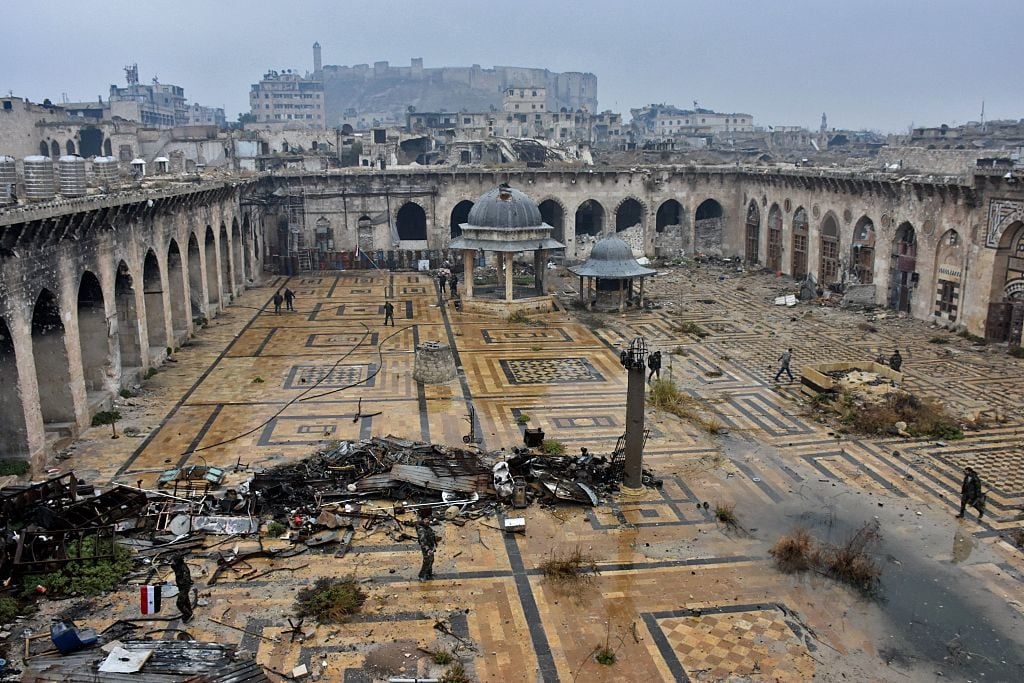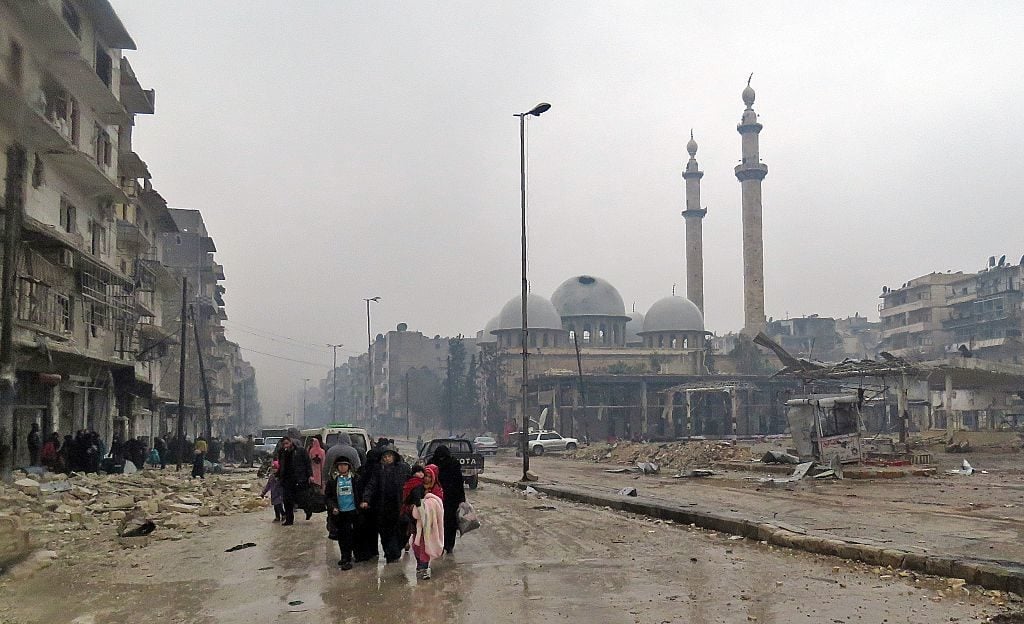Politics
Amid Evacuation, Aleppo Begins Assessment of Destruction of Cultural Heritage
Most historic monuments and buildings in the ancient city have been destroyed by civil war.

Most historic monuments and buildings in the ancient city have been destroyed by civil war.

Alyssa Buffenstein

As tens of thousands of remaining residents set to evacuate the city of Aleppo in Northwestern Syria today, some begin to assess the destruction of historic cultural heritage.
A ceasefire between pro-government forces, who had retaken the majority of the city in past weeks, and rebel fighters was reached on Tuesday, December 13. A planned civilian evacuation from the eastern part of the city was reportedly met with airstrikes over rebel territory, where up to 50,000 civilians remained, according to the BBC. Another ceasefire deal was reached early Thursday morning, December 15, around 12:30 AM GMT, the Guardian reports.
UNESCO notes that Aleppo “was once one of the richest cities of all humanity.” It is a World Heritage site, and was first added to the list of World Heritage in Danger in 2013, after first becoming a battleground in July 2012.

Syrian residents, fleeing violence in the Bustan al-Qasr neighborhood, arrive in Aleppo’s Fardos neighbourhood on December 13, 2016, after regime troops retook the area from rebel fighters. Photo courtesy Stringer/AFP/Getty Images.
The Old City, its historic center, was once characterized by its Citadel, Great Mosque dating to the 12th century, and madrasas (schools), homes, and public baths from the 16th and 17th centuries. The citadel was built and maintained by Arab military from the 12th to 14th centuries, and its site contained archeological evidence dating back to as early as the 10th century BC. The walled city surrounding it was inhabited and developed by Hittite, Assyrian, Akkadian, Greek, Roman, Umayyad, Ayyubid, Mameluk, and Ottoman cultures, which all added to the city’s rich architectural landscape.
The center of trade routes from the East and West, it was also home to the world’s largest covered souk, spanning more than 8 miles.
In modern times, Aleppo was the country’s center of industry and finance, with around 2.3 million residents, Syria’s largest city before the civil war. Its history drew tourists from around the world.
Years of bombardments have left the city “unrecognizable,” lawyer and Aleppian historian Alaa al-Sayyed told AFP. The citadel has been heavily damaged, the covered souk attacked by gunfire, rockets, and mortar rounds, an 11th century minaret destroyed, and residential blocks leveled. Sputnik News reports that 150 buildings have been lost, including most cultural monuments.
Bodies of dead and wounded currently lie among the wreckage, reflecting the horror of lives cut short, and of thousands of years of cultural construction lost.
Speaking to Sputnik News, the Director of the Syrian Department of Antiquities and Museums Maamun Abdel Karim says a plan with UNESCO is already being developed to restore the heritage sites, which will begin with assessment of the damage and will require international help.